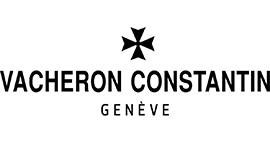The Poinçon de Genève is dead, long live the Poinçon de Genève! This royal allegory hides an unprecedented technological change at this famous institution. In short, the Poinçon de Genève, found on the timepieces of brands such as Cartier, Chopard, Roger Dubuis and Vacheron Constantin, will no longer be a hallmark in the literal sense. Its vocation and the regulations governing it remain the same, but the famous hallmark will no longer be applied by a stamping process. The new engraving technique is based on nanotechnologies.
The same, but different
For the watch buying public, little changes. For those in the industry, however, it’s a genuine revolution. Why? Because the ancient technique of hallmarking by stamping (the “poinçon” in the Poinçon de Genève is the punch that stamps the die-set on a press) consisted of nothing less than a violent compression of materials.
This squashing of metal often resulted in an imprecise contour, which meant that the engraving had to be reworked to make it clean and smooth – a process known as trimming. Another disadvantage was that such hallmarks could not be stamped on to materials that were too fragile or too hard (because the stamp would not leave an indent). But the myth persisted and nobody thought about eradicating these problems. Nobody, that is, apart from the very institution behind the hallmark itself, Timelab.

Contactless engraving
The problems occurred because of two materials being in a state of shock against each other. So to improve on this the process needed to be carried out without contact, and it was along these lines that Timelab worked. Its partners: a laboratory at the Faculty of Science at the University of Geneva (UNIGE) and the MaNEP network (Materials with Novel Electronic Properties), a non-profit association based in Geneva, in collaboration with PHASIS, a spin-off of the UNIGE.
"Principe d’électrolyse"
The result of their work is this new type of contactless engraving, called “nanostructuring engraving”. It is based on the principle of electrolysis, sending a number of electrical impulses to the surface to be engraved (see large photo at the top of the page). Technically, the Poinçon de Genève is no longer a hallmark. But for the beauty of the name and its history, the name will be kept. “The Poinçon de Genève is not changing, it is innovating,” summarises Anne-Sophie Guerra, Director of the Timelab foundation.

New opportunities
This invention opens up new opportunities for the industry. The absence of contact means that the Poinçon de Genève can now be placed on extremely thin products, even jewellery pieces. “As long as they have a metallic element that can receive the electrolysis and thus the engraving,” Jorge Cors, Manager of PHASIS, points out.
Furthermore, all metals can now be “hallmarked”, even the very hard platinum. The new hallmark will also offer a better definition, since the material will no longer be compressed: instead its surface is merely modified. This method also allows the engraving to be done on plates before they are cut out, or on the finished product, which offers manufacturers greater flexibility to choose at which stage their timepiece is hallmarked.
In turn, other industries, such as medicine or aerospace, may soon be interested in this technology.








